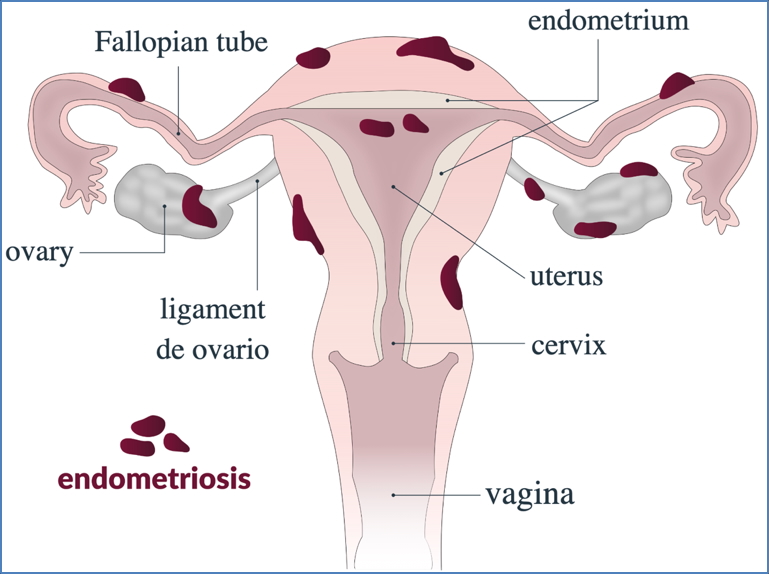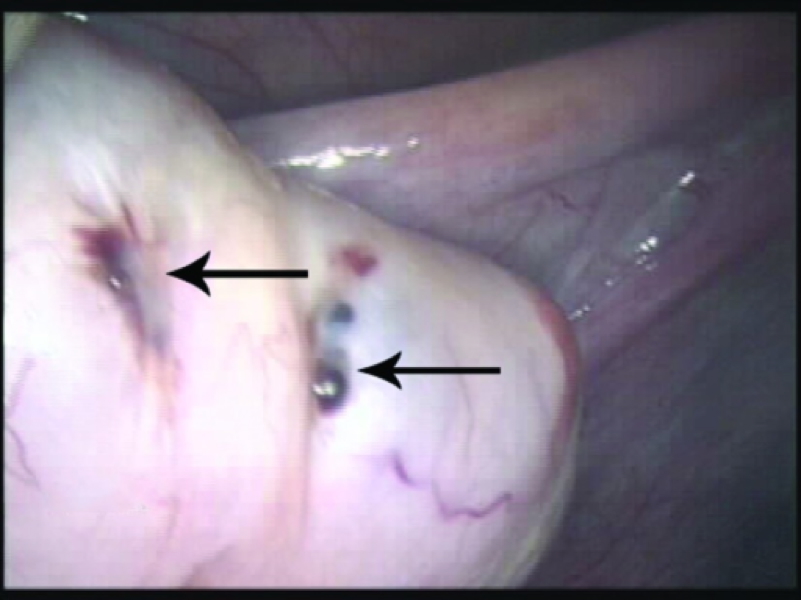Table of Contents
Overview – Endometriosis
Endometriosis is a common cause of secondary dysmenorrhoea and chronic pelvic pain in women of reproductive age. It results from the presence of functional endometrial tissue outside the uterus, most commonly affecting the ovaries, pelvic peritoneum, and pouch of Douglas. Symptoms typically follow a cyclical pattern, mimicking menstruation, and may lead to complications such as infertility and bowel obstruction.
Definition
Endometriosis is a chronic, inflammatory gynaecological condition in which endometrial glands and stroma are located outside the uterine cavity, often in the pelvis. It is a major cause of secondary dysmenorrhoea.
Aetiology
- Retrograde menstruation: viable endometrial tissue flows backward through the fallopian tubes
- Alternative theories:
- Vascular or lymphatic spread of endometrial tissue
- Coelomic metaplasia (less common hypothesis)
Pathogenesis
- Ectopic endometrial tissue implants on:
- Pelvic peritoneum
- Pouch of Douglas
- Ovaries and fallopian tubes
- These implants remain hormonally responsive → cyclic bleeding → inflammation
→ Chronic cyclical peritonitis
→ Pelvic pain, fibrosis, and adhesion formation

Morphology
- “Powder burn” lesions on peritoneal surfaces
- Dark purple nodules and small hemorrhagic foci
- Ovarian endometriomas (“chocolate cysts”) – filled with old blood
- Uterine and tubal adhesions in advanced disease


2. Hic et nunc, Public domain, via Wikimedia Commons
Clinical Features
- Dysmenorrhoea: deep pelvic or lower back pain often pre-menstrual and cyclical
- Dyspareunia (painful intercourse)
- Chronic pelvic or lower back pain
- Infertility due to tubal or ovarian dysfunction
- Symptoms may mimic irritable bowel syndrome or pelvic inflammatory disease
Complications
- Pelvic adhesions and fibrosis (“frozen pelvis”)
- → Infertility
- → Bowel obstruction
- Ruptured endometriotic cyst
- Can result in acute abdomen → surgical emergency
Investigations
- Pelvic ultrasound: may detect ovarian endometriomas
- Laparoscopy: gold standard for diagnosis and therapeutic intervention
- Biopsy of lesions can confirm histology
Management
Surgical
- Laparoscopic ablation or excision of endometrial implants
- Adhesiolysis if required
Medical
- Progesterone-only contraception
- Oestrogen-lowering drugs (e.g. aromatase inhibitors)
- NSAIDs for pain relief
- Hormonal suppression may alleviate symptoms but does not cure the disease
Prognosis
- No permanent cure
- Symptoms often improve with:
- Pregnancy
- Menopause (due to hormonal suppression)
Summary – Endometriosis
Endometriosis is a chronic, inflammatory condition involving ectopic endometrial tissue. It causes dysmenorrhoea, dyspareunia, and infertility, with diagnosis often requiring laparoscopy. Management includes hormonal suppression and surgical ablation. For a broader context, see our Reproductive Health Overview page.